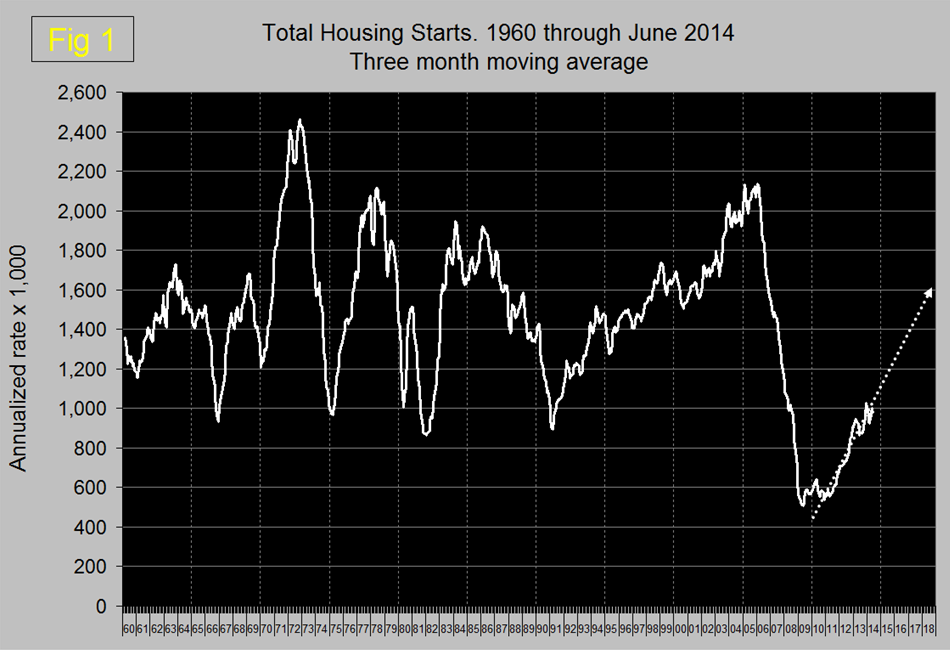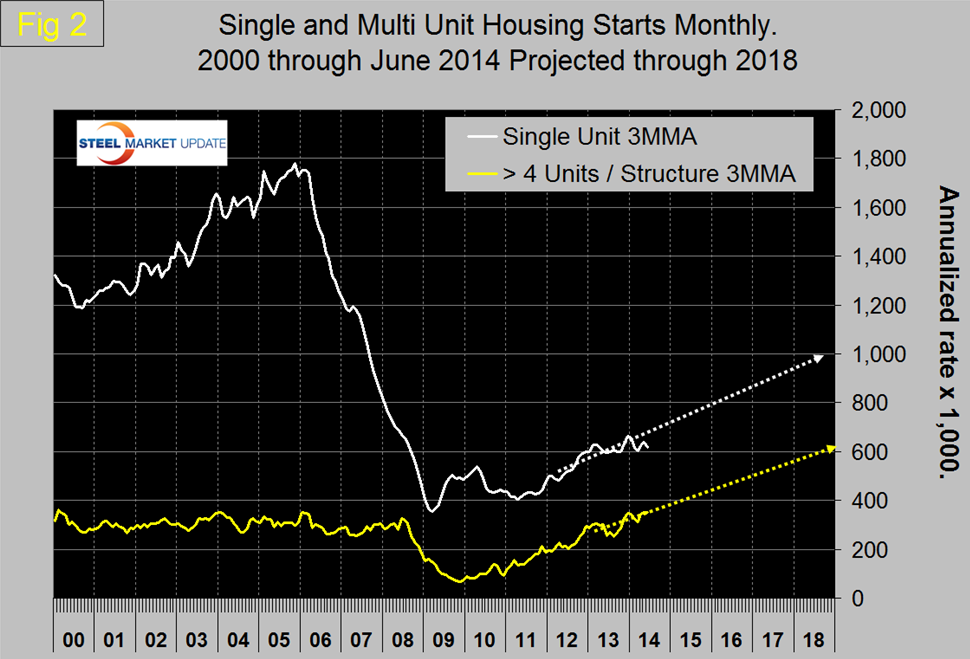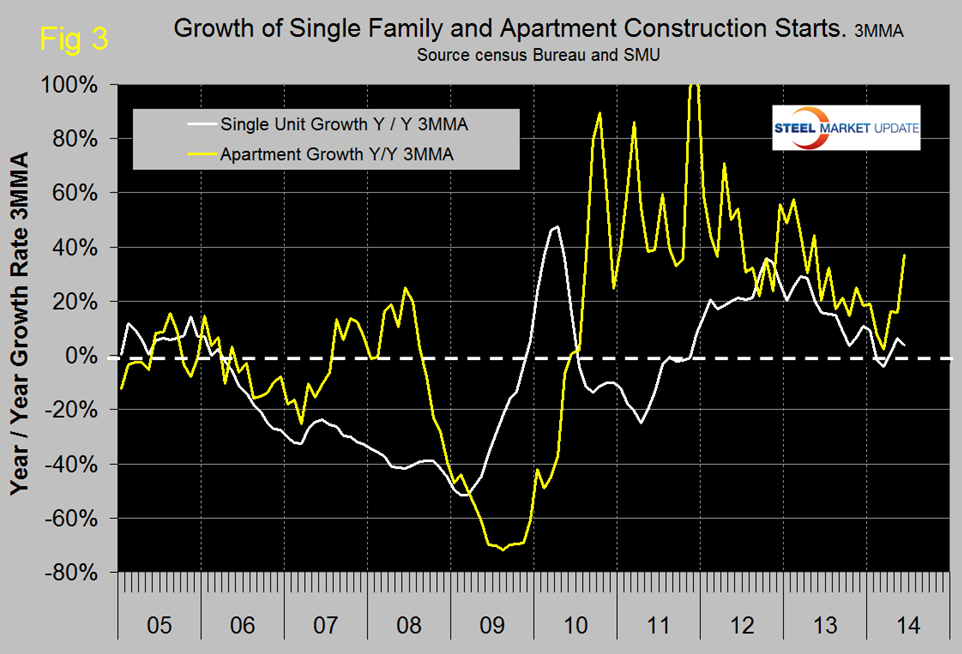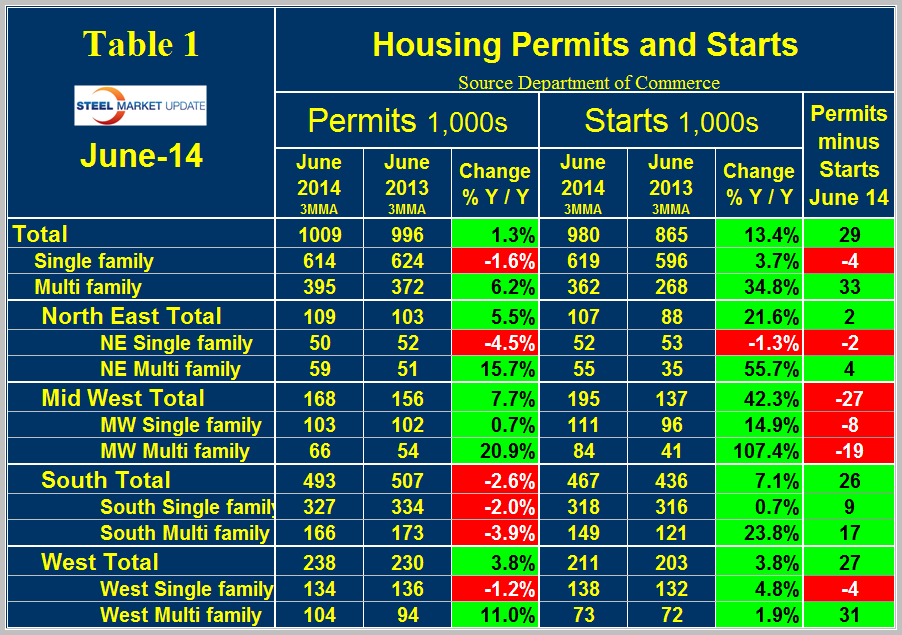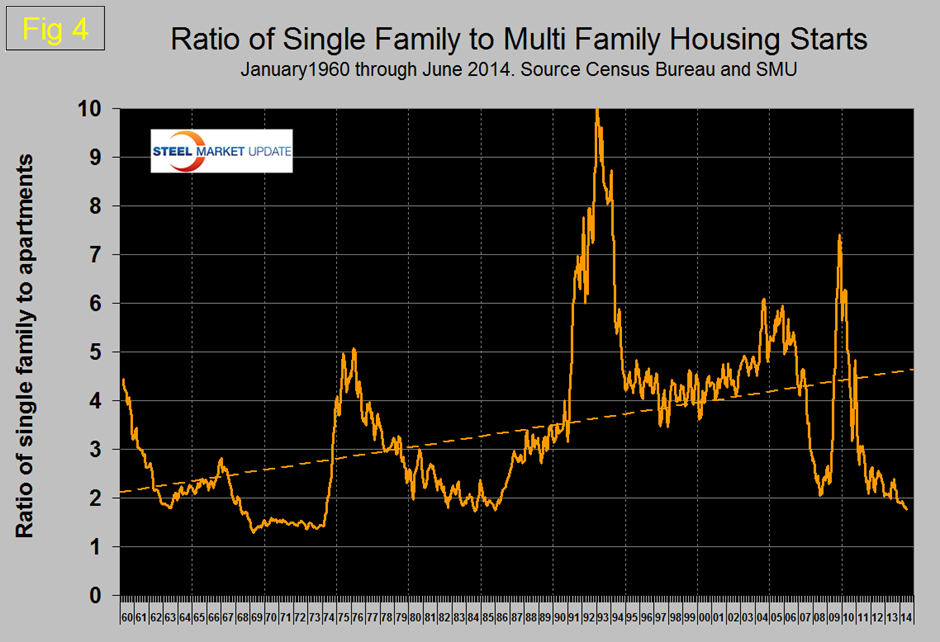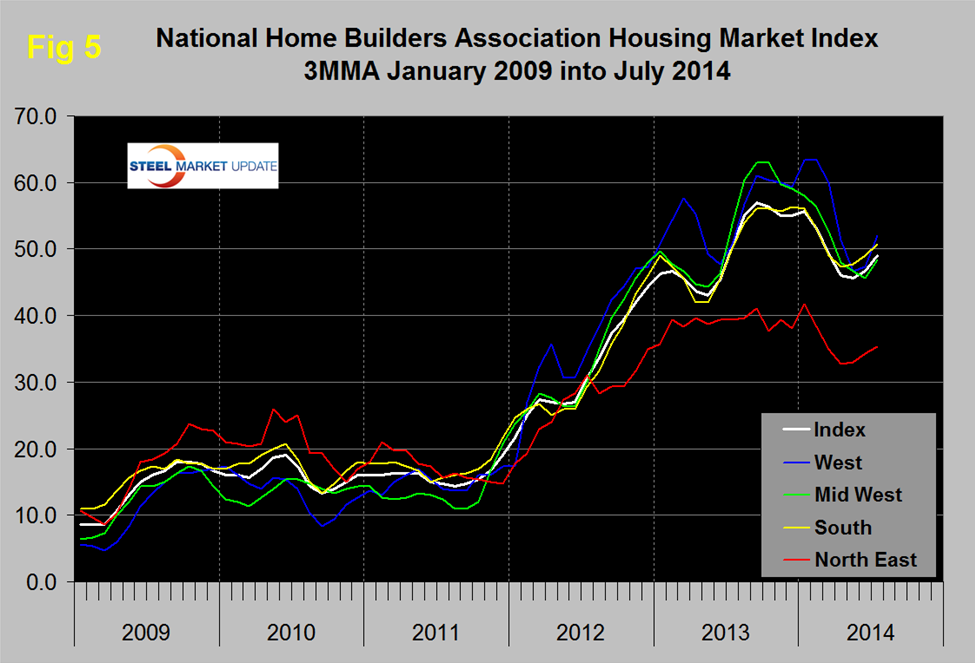Economy
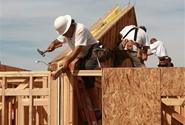
Housing Starts 3MMA Moved Sideways in June
Written by Peter Wright
July 20, 2014
A first glance suggests that the June housing starts report was depressing, total starts at 893,000 were down from 985,000 in May and 1,063,000 in April. However the three month moving average (3MMA) in June was 980,000 which was exactly the same as April. Not progress but not a calamity either. Even on a 3MMA basis housing starts are extremely erratic, (Figure 1). The trajectory is still on track to reach 1.6 million by the end of 2018.
Multifamily starts are now beyond the pre-recession high but single family continues to struggle, (Figure 2).
The growth rate of multifamily has shot up in the last three months as single family has languished and now stands at 37.1 percent and 3.7 percent for multi and single family respectively, (Figure 3). Both on a 3MMA year over year basis.
Permit data is useful to evaluate where future starts are headed. If permits exceed starts then we anticipate an acceleration and vice versa. Table 1 shows that total permits did exceeded starts by 29,000 in June on a 3MMA basis.
However the situation is dramatically different for single and multifamily units. Single family permits were 4,000 less than starts and multifamily permits were 33,000 more than starts. This signals a future acceleration in multifamily and a deceleration in single family. The ratio of the two sectors is shown in Figure 4 and demonstrates that single family compared to multifamily is less desirable than at any time in the last 30 years. Based on permit data this trend will not change any time soon.
The situation in the four regions reported in the census Bureau report were not a mirror of that at the national level in June. The Mid-West had a y/y growth in total starts of 42.3 percent and starts exceeded permits. Permits in the South for both single and multifamily units declined.
The dramatic change in the consumer’s view of how he/she wants to live is accelerating. The balloon in student loan debt is one of the fuels of this trend but so presumably is the view that housing is not necessarily the great investment that it was once thought to be. In addition uncertainty in the job market makes mobility desirable and promotes the idea of rent in preference to purchase.
The National Association of Home Builders confidence report released last week exceeded economists’ expectations with a gain of six points to 53, (Figure 5). Any value above 50 indicates an overall positive business confidence.
The association press release reads as follows:
Builder confidence surpasses key benchmark in July
July 16, 2014 – Builder confidence in the market for newly-built single-family homes reached an important milestone in July, rising four points to a reading of 53 on the National Association of Home Builders/Wells Fargo Housing Market Index (HMI) released today. Any reading over 50 indicates that more builders view sales conditions as good than poor.
“This is the first time that builder confidence has been above 50 since January and an important sign that it is strengthening as pent-up demand brings more buyers into the marketplace,” said NAHB Chairman Kevin Kelly, a home builder and developer from Wilmington, Del.
“An improving job market goes hand-in-hand with a rise in builder confidence,” said NAHB Chief Economist David Crowe. “As employment increases and those with jobs feel more secure about their own economic situation, they are more likely to feel comfortable about buying a home.”
Derived from a monthly survey that NAHB has been conducting for 30 years, the NAHB/Wells Fargo Housing Market Index gauges builder perceptions of current single-family home sales and sales expectations for the next six months as “good,” “fair” or “poor.” The survey also asks builders to rate traffic of prospective buyers as “high to very high,” “average” or “low to very low.” Scores from each component are then used to calculate a seasonally adjusted index where any number over 50 indicates that more builders view conditions as good than poor.
All three HMI components posted gains in July. The index gauging current sales conditions increased four points to 57, while the index measuring expectations for future sales rose six points to 64 and the index gauging traffic of prospective buyers increased three points to 39.
The HMI three-month moving average was up in all four regions, with the Northeast and Midwest posting a one-point and two-point gain to 35 and 48, respectively. The West registered a five-point gain to 52 while the South rose two points to 51.
SMU Comment: Even though the steel content of housing is only a small proportion of total steel consumption, housing is a leading indicator of many construction sectors such as non-residential and sub sectors of infrastructure and has a large multiplier effect in the economy as a whole. To the extent that readers businesses are influenced by the relative size of the two housing sectors they should plan for further continued growth of apartment construction and a single family sector that continues to struggle.

Peter Wright
Read more from Peter WrightLatest in Economy

Architecture billings continue to slide in March
Architecture firms said billings continued to decline in March, according to the latest Architecture Billings Index (ABI) released by the American Institute of Architects (AIA) and Deltek.

Beige Book shows concerns about trade policy
Manufacturing was mixed, but two-thirds of districts said activity was little changed or had declined.

New York state manufacturing index drops again in April
Firms were pessimistic, with the future general business conditions index falling to its second lowest reading in the more than 20-year history of the survey

Construction adds 13,000 jobs in March
The construction sector added 13,000 jobs, seasonally adjusted, in March, but tariffs could undermine the industry.

Supply chains, end-users brace for impact from tariffs
Supply chains are working through what the tariffs mean for them

